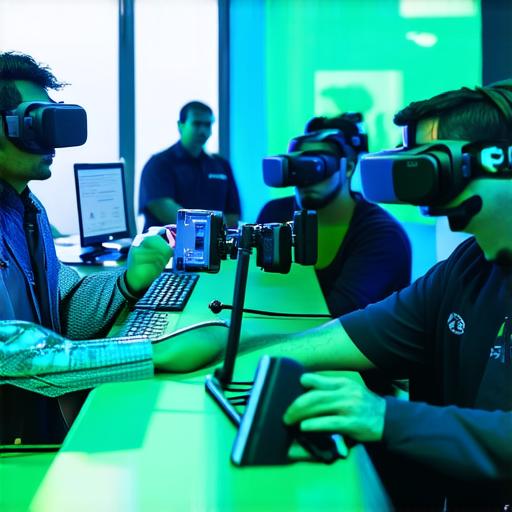1. Knowledge of Programming Languages
Virtual reality development requires a strong understanding of programming languages such as C++, Java, Python, and JavaScript. These languages are used to create the core components of VR applications, including the graphics, physics engines, and user interfaces.
2. Understanding of Mathematics and Physics
Virtual reality development requires a strong foundation in mathematics and physics. You need to have a good understanding of linear algebra, calculus, and trigonometry to create realistic graphics and physics simulations in VR.
3. Familiarity with 3D Modeling and Texturing
Creating 3D models and textures is an essential part of VR development. You need to be proficient in using 3D modeling software like Maya, Blender, and SketchUp to create detailed and realistic models.
4. Experience with VR Development Tools and Frameworks
There are several VR development tools and frameworks available that can help you create immersive experiences. Some of the popular ones include Unity, Unreal Engine, A-Frame, and SteamVR.
5. Attention to Detail
Virtual reality development requires a keen attention to detail. Even small errors or oversights can have a significant impact on the user experience.
6. Creativity and Innovation
Virtual reality development is all about creativity and innovation. You need to be able to think outside the box and come up with unique and exciting ideas for VR experiences.
7. Teamwork and Collaboration
Virtual reality development is a collaborative effort that requires effective teamwork and communication skills. You need to be able to work well with other developers, designers, and stakeholders to create cohesive and high-quality VR applications.
Case Study: The Development of “Beat Saber”
“Beat Saber” is a popular VR rhythm game developed by Beat Games. The game was created using Unity, a popular game engine that supports VR development.
FAQs
1. What skills do I need to become a VR developer?
You need knowledge of programming languages, mathematics and physics, 3D modeling and texturing, experience with VR development tools and frameworks, attention to detail, creativity and innovation, and teamwork and collaboration.
2. What is the most popular game engine for VR development?
Unity is one of the most popular game engines for VR development, along with Unreal Engine and A-Frame.
3. How do I create realistic graphics in VR?
You need to have a strong foundation in mathematics and physics, as well as proficiency in using 3D modeling software like Maya, Blender, and SketchUp to create detailed and realistic models.
4. What is the role of physics engines in VR development?
Physics engines simulate real-world physical phenomena in virtual environments, such as gravity, collisions, and rigidbody dynamics. They are essential for creating realistic and immersive VR experiences.
5. How do I test my VR application?
You should thoroughly test your VR application to ensure it is bug-free and performs optimally. This includes testing on different hardware configurations and testing for motion sickness and other common issues associated with VR development.


